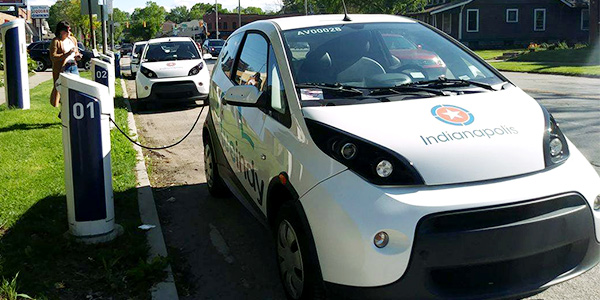By Amanda Durish Cook
CARMEL, Ind. — MISO will one day see a proliferation of electric vehicles, just don’t expect them to begin plugging in en masse before millennials begin hitting midlife crises.
The region served by MISO can expect to see significant EV penetration of anywhere from 1 to 12 million vehicles by 2039, according to a Lawrence Berkeley National Laboratory impact study prepared for the RTO.
MISO policy studies engineer Aditya Jayam Prabhakar opened his June 12 presentation on the study before the Planning Advisory Committee with an anecdote describing how his neighbor on one side had recently purchased a red Tesla model, while his other neighbor is also considering buying a Tesla.
“I’m going to be addressed as the guy between two Teslas,” Prabhakar joked.
But he said the story illustrates that “what was once was out-of-reach is now becoming attainable.”
If EV adoption revs up, MISO could see as many as 36 million EVs in the footprint if “MISO turns into San Jose,” Prabhakar said. But that’s an extremely unlikely case, he pointed out.
“There’s obviously a very high range,” Prabhakar said.
The likeliest range of future EVs, he said, lies somewhere among the study’s “low,” “base” and “high” case scenarios of 1.6 million, 4 million and 12 million vehicles, respectively, by 2039. To come up with its estimates, Berkeley used a combination of MISO and state-level data, 2018 projections from Boston University researcher Peter Fox-Penner and figures from the U.S. Energy Information Administration.
The MISO footprint currently contains only about 70,000-80,000 EVs, Prabhakar said.
“That’s a very small number compared to where we could be in the future,” he said
The study shows that if left uncontrolled, EV charging stands to steadily increase peak loads and the ramps needed to accommodate those peaks. However, if EV charging is controlled, it can deliver “significant load shaping grid services,” MISO said.
Controlled charging can occur in one of two ways, the study explained. Under “unidirectional” control, the flow of power to the vehicle can vary over the course of a charging session based on a timer, price signal or other set of rules based on grid conditions. “Bidirectional” control offers all those same features, while additionally allowing power to flow from the vehicle to the grid, helping to alleviate grid stress during periods of peak consumption.
MISO also noted that managed EV charging can help mitigate the daily load troughs and morning and evening ramps that increased renewable use can exacerbate.
In the extreme, 36-million vehicle case, uncontrolled EV charging “dominates loads throughout the day” and could add about 40 GW to MISO load by mid-2038. MISO’s average summer load last year was 86.6 GW.
“Preparing for EV impacts and their charging is a really great thing to start thinking about,” Prabhakar said. ” … This is uncharted territory in terms of what can happen; there’s so much that can happen.”
“I think EVs are a question of not if, but when,” Wabash Valley Power Association’s Matt Dorsett said. “What are the next steps for MISO? It’s certainly on our radar, and I think it’s coming quicker than we’d like.”
Prabhakar said MISO can begin adding more sophisticated EV load shapes in planning models. He said previous attempts to model future EV use boiled down to simple energy use increases.
“This is a more engineering-based approach,” he said, referring to the load-shaping approach.
Veriquest’s Dave Harlan asked whether MISO would also consider that, by 2040, several MISO generators could have already installed storage that would already serve to flatten load.
Prabhakar agreed potentially disruptive technologies like storage and EV charging should be considered together.
Multiple stakeholders also asked MISO to keep an eye on burgeoning, ultra-fast technology that can fully charge a vehicle within minutes, placing extra demand on the grid.





